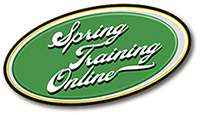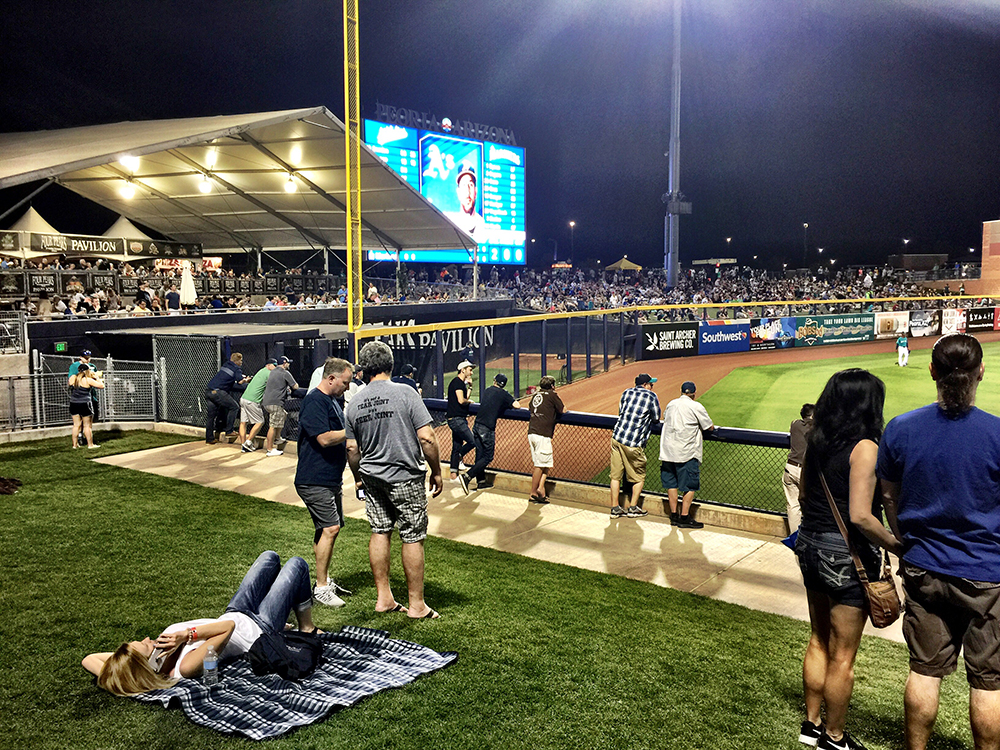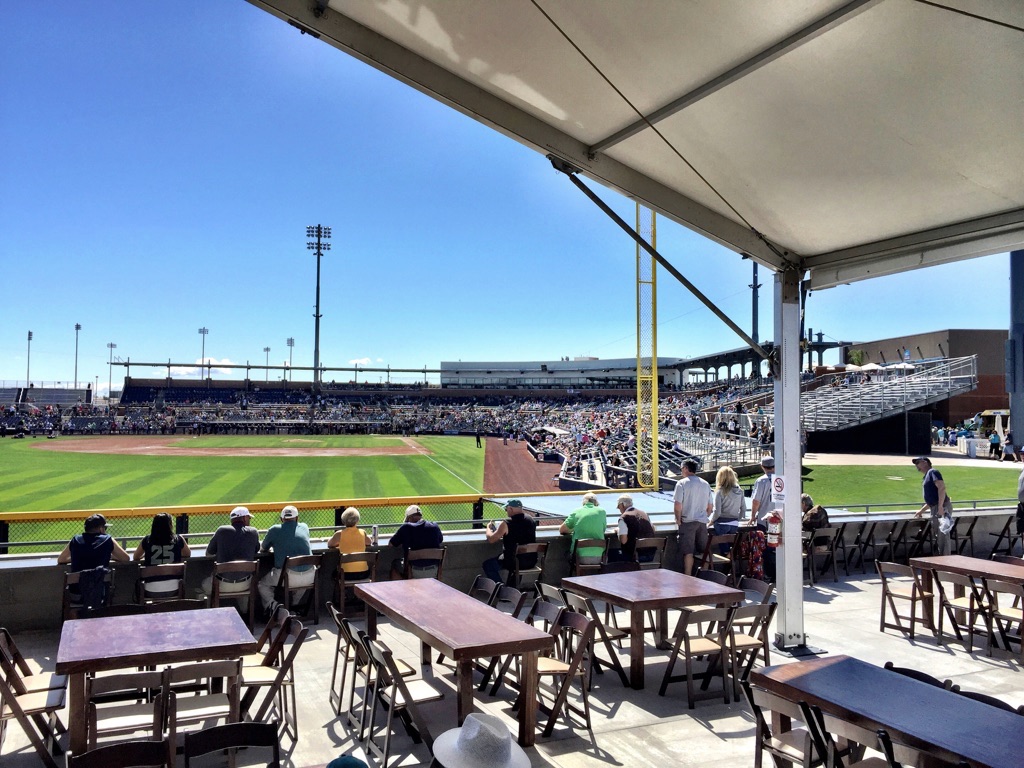San Diego Padres Spring Training Home | Peoria Stadium | If You Go … | 2025 Schedule | Minor League Schedule | Roster
PEORIA STADIUM
| Capacity | 12,339 |
| Year Opened | 1994 |
| Dimensions | 340L, 385LC, 410C, 385RC, 340R |
| Local Airport | Phoenix |
| Tickets on Sale | To be announced |
| Ticket Prices | To be announced |
| Ticket Line | 800/677-1227 |
| Ticket Web Site | mlb.com |
| Address | 16101 N. 83rd Av., Peoria, AZ 85382 |
| Directions | The ballpark is best accessed from the outer loop of Phoenix highways and freeways. From Hwy. 101 (Agua Fria Freeway), take Bell Road and go east to 83rd Avenue. Go south (to the right) and the sports complex will be to the left. It’s well-marked and you’ll see the place from the freeway. |
San Diego Padres Spring Training: Party Time in Peoria
Peoria Stadium is considered by many to be among the best ballparks in the Cactus League, despite being one of the oldest these days. The Seattle Mariners and the San Diego Padres share the ballpark, so a visit to Peoria – a suburb of Phoenix – during any point in spring training will undoubtedly find a game going on, but recent renovations tightened the supply of tickets available for most dates.
The complex was the first MLB spring-training facility shared by two teams. (There had been situations where two teams played games in the same ballpark, but they maintained separate training facilities.) Today, of course, almost every new training camp in the Cactus League is built for two teams.
The Peoria Sports Complex contains Peoria Stadium, two 40,000-square-foot clubhouses, indoor and outdoor batting tunnels, 12 major-league-sized practice fields (two lighted), and four half fields. The extensive facility allows both teams and their minor-league squads to practice simultaneously.
In the past, we were not very big fans of Peoria Stadium. It was not an overly comfortable place to see a game, with cramped concourses, a huge threat of sunstroke, and traffic jams galore. But the renovation designed by Populous addressed those issues, expanding the ballpark footprint while allowing Peoria to overhaul concessions. That expansion also included a new, larger team store, a new high-end restaurant, a new water feature for the young ones, and more. All in all, the improvements were well-chosen and increased capacity while at the same time dispersing traffic throughout the ballpark. Add in the general passion shown by Padres and Mariners fans for both their teams and spring training, and you have one of the more exciting atmospheres in the Cactus League.
More than any other Cactus League facility, a spring-training game at Peoria Stadium feels like a real event. There’s always a lot of traffic and excitement surrounding a game—both the Padres and the Mariners draw well during spring training—and the games sport a carnival-like atmosphere. The area around the ballpark has evolved from a series of chain restaurants and generic hotels to an intriguing mix of high-end restaurants and unique eateries.
There’s virtually no difference as to how a spring game is run here. No matter who’s the home team—and the first week of the season it won’t matter a lot, as every spring the Padres and Mariners face off against each other several times—you can always expect crammed seating, a berm area teeming with families and expatriates, and a busy concession concourse. The only difference may be in the fans’ complexions. For some reason, San Diego residents always look tanner and healthier than their pasty Puget Sound compatriots.
Spring Training History
The San Diego Padres have trained in Arizona since their National League inception in 1969: from 1969 to 1993 the team trained in Yuma, while in 1994 the team moved to the new ballpark in Peoria.
To receive spring-training information via email, please sign up for the Spring Training Online email newsletter.
San Diego Padres Spring Training Home | Peoria Stadium | If You Go … | 2025 Schedule | Minor League Schedule | Roster



Comments are closed.